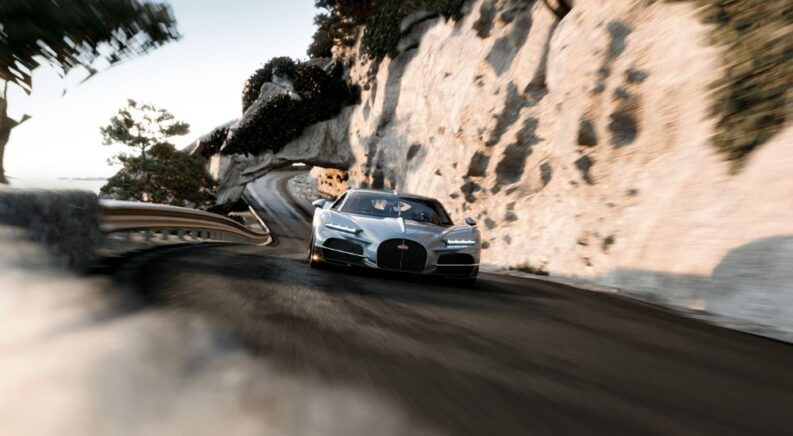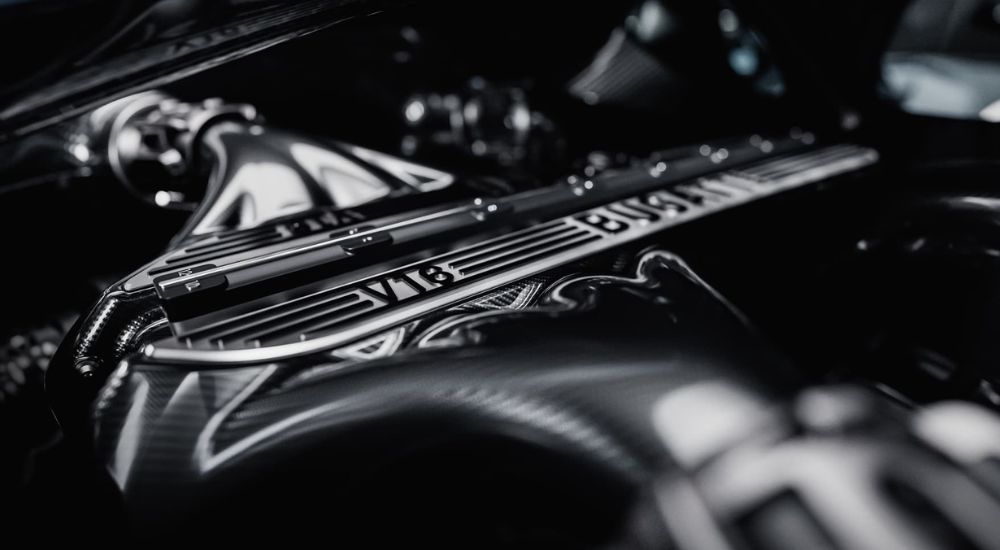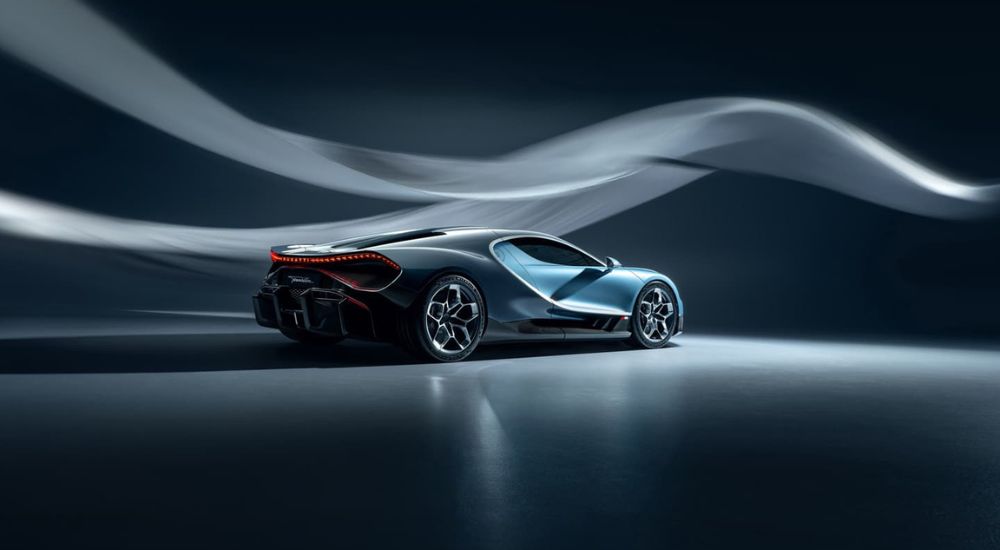For more than 115 years, the Bugatti name has been associated with vehicles that offer the highest performance and luxury. Bugatti was arguably the original supercar and hypercar manufacturer, and modern rides like the EB 110, Veyron, Chiron, and Bolide have carried on the tradition.
Soon, another nameplate will be joining this illustrious list. On June 20, 2024, Bugatti officially announced the Tourbillon. Named for the movement used in premium mechanical watches to offset the effects of gravity, the Bugatti Tourbillon is shaping up as one of the most powerful—and expensive—vehicles ever produced. How expensive? The official price tag is set at €3.8 million, which is somewhere over $4 million, depending on the exchange rate when the vehicle rolls out. That makes the price tags on fellow legendary vehicles like the Chevy Corvette and Porsche 911 look like peanuts in comparison.
How is it that a car can exceed $4 million—and is it worth such an astronomical price tag? I decided to find out. Join me for a look at the story behind the Bugatti Tourbillon, some of its most notable specs, and when it might finally arrive on the world’s roads.
The Inspiration for the Tourbillon
As I mentioned, Bugatti is known for cars that are on another level of performance and style. It’s no surprise the brand is willing to think outside the box when it comes to design. Such is the case for the forthcoming Bugatti Tourbillon. Not only is it named for a watch mechanism, but the inside is laid out to look like a watch. The center console looks like an internal watch movement—and in a rejection of modern digital conventions, the console is fully analog with mechanical gears. Swiss watchmaker Concepto manufactured the instrument cluster, which lays out the speedometer and tachometer to make them look like hour and minute hands.
A second major theme behind the Tourbillon is the idea of a skeletonized look. Bugatti lets you see the mechanisms of various functions. You can view the gears that run the center console and all the gauges, making it truly feel like you’re at the heart of a precision machine. As for the exterior, the Tourbillon retains some of the appearances of the Chiron, which it is replacing in the Bugatti lineup. This includes C-shaped lines on the side, the horseshoe-style grille, and the two-tone paint scheme. It doesn’t carry over any components, though, and the proportions have changed, so the Tourbillon is a distinct hypercar.
All this is in line with the Bugatti tradition of making its cars recognizable and timeless. But even as the brand pays tribute to the past, Bugatti has adopted a more modern feel. As you’re about to see, it has gone modern with how the Tourbillon drives, too.
Looking Under the Hood
Twice in the last 20 years, Bugatti has smashed previous performance standards for street-legal cars. It brought us the first 1,000 hp road car in 2005 with the Veyron, then broke the 1,500 hp barrier in 2016 with the Chiron. Now, the Bugatti Tourbillon has reset the bar again.
If you’ve gotten used to supercars with six, eight, ten, or even 12 cylinders, the engine in the Bugatti Tourbillon will blow you away. This 8.3L V16 powerplant—yes, 16 cylinders—was designed by Cosworth, which has the third-most Formula One victories of any engine supplier. Interestingly, the naturally aspirated engine is nothing special compared to previous Bugatti engines, producing “only” 986 hp and 664 lb-ft of torque by itself.
However, it’s not working alone. Bugatti and Cosworth have ditched the quad turbochargers from the Veyron and Chiron in favor of plug-in hybrid technology. There will be three electric motors: two on the front axle and one on the rear. Put it all together, and you have a combined 1,775 hp. For context, you can put the latest Ford Mustang Dark Horse (500 hp), Chevy Corvette Z06 (670 hp), and Dodge Charger Sixpack HO (550 hp) together and still not have as much horsepower as the Bugatti Tourbillon! It’s the most horsepower ever produced by a naturally aspirated engine. With a 25 kWh battery pack, you can go an estimated 37 miles on electric-only power while still gassing up like normal for longer trips.
The decision to incorporate electrification makes sense when you consider that present-day Bugatti is partly owned by Rimac, a company best known for its EV sports cars. Combining the best of electric and internal combustion means the best of everything. Bugatti claims a 0-60 mph time of a scant two seconds and a top speed of 277 mph when you add the optional second “speed key.” If this is true, the only challenge will be finding a runway or salt flat long enough to reach that speed. The design also serves as a transition for Bugatti from over a century of internal combustion technology to the likely eventuality of all-electric vehicles.
Performance and Style
Once you’ve located the perfect spot to let your Tourbillon loose, it will be ready. That 277 mph speed isn’t just because of sheer power—it’s also thanks to incredible aerodynamics, chassis, body, and powertrain design. The Bugatti Tourbillon will have a carbon fiber chassis that is strong, light, and stable. The carbon-composite front ducts, integrated rear diffuser, and active rear spoiler further reduce weight as they add downforce. Bugatti even positioned the exhaust so that the outgoing gasses produce warmer air directly beneath the diffuser; this reduces the air pressure so the diffuser can further “plant” the rear.
Other advanced engineering includes a dual-valve suspension that is electronically adjustable for your driving habits and a brake-by-wire system with eight-piston calipers to safely slow you down as fast as you accelerate. The Tourbillon will have standard AWD, and the eight-speed dual-clutch transmission provides smoother shifting. Interestingly, it won’t include a reverse gear; instead, the rear electric motor does the backing up (this means you can’t back up if the battery runs out, so plan accordingly). The butterfly doors may not make you go faster or turn better, but they sure will look awesome.
Interior Details
I discussed the interior some while talking about the Tourbillon’s inspiration, but there’s so much else to cover. Remember that clock-like analog gauge display? It is attached to the fixed steering wheel hub, which means you will always have 100% gauge visibility for full access to critical knowledge and mesmerizing looks. The gauges have backlighting as well for driving at night. Though the seat positions are fixed, you can adjust the locations of the pedal box and steering wheel for a more comfortable fit.
As for technology, Bugatti provides the essentials for those rare times when the vehicle itself doesn’t provide enough entertainment. The small retractable screen with Apple CarPlay and Android Auto allows you to listen to music, check texts, or get directions to the track. Nearly all the controls are going to be analog, though, including the drive mode knob, climate control knobs, and multimedia switches. This allows people to do what they expect in a vehicle while adhering to the automaker’s “timeless” philosophy—the more tech-heavy the insides are, the more likely it is to become dated.
When Will We See the Bugatti Tourbillon?
Along with being the name of a wristwatch movement, the French word “tourbillon” translates to “whirlwind.” From what I’ve seen and read about the Bugatti Tourbillon so far, it will live up to that name. The 250 lucky people who get to own a Tourbillon have a while to wait, though. Bugatti does not expect to start shipping them until sometime in 2026.
In the meantime, I’ll be salivating over the prospect of the latest Bugatti hypercar––and seeing if I can come up with $4 million to order one. It’s going to be a remarkable machine, and whoever ends up with a Tourbillon in their garage will be the envy of the neighborhood.






